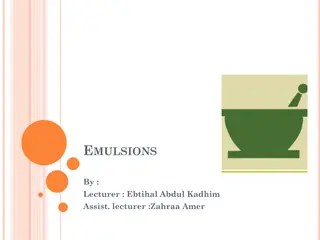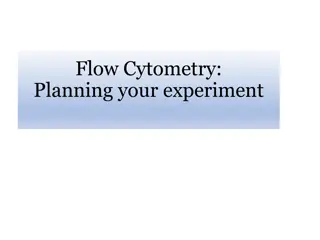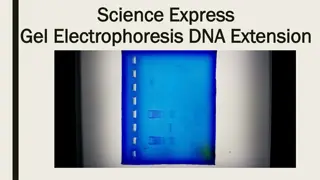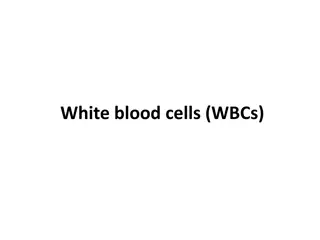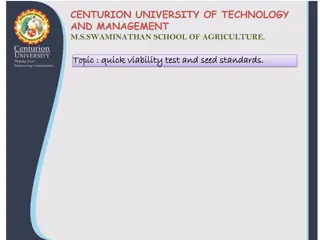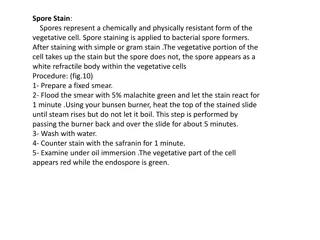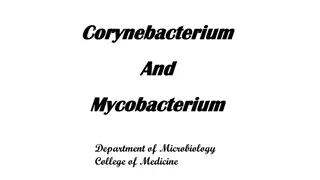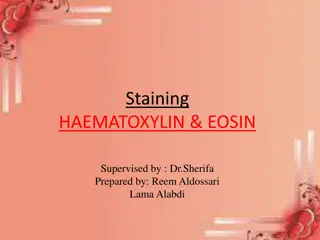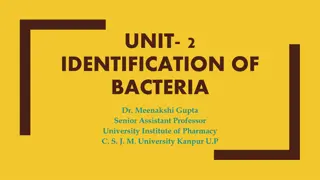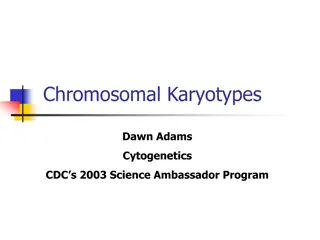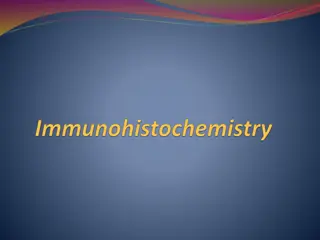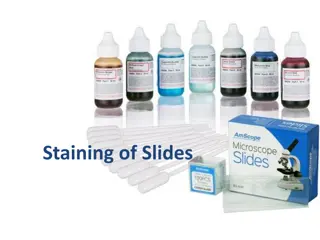Staining techniques
Explore a series of images illustrating various staining techniques used in histopathology, including fixation, different types of staining methods like Gram staining and acid-fast staining, as well as vital and supra-vital staining. Learn about the principles and applications of these techniques in differentiating between live and dead cells, observing cellular structures, and identifying specific pathogens such as Mycobacterium avium subsp. paratuberculosis.
Download Presentation

Please find below an Image/Link to download the presentation.
The content on the website is provided AS IS for your information and personal use only. It may not be sold, licensed, or shared on other websites without obtaining consent from the author.If you encounter any issues during the download, it is possible that the publisher has removed the file from their server.
You are allowed to download the files provided on this website for personal or commercial use, subject to the condition that they are used lawfully. All files are the property of their respective owners.
The content on the website is provided AS IS for your information and personal use only. It may not be sold, licensed, or shared on other websites without obtaining consent from the author.
E N D
Presentation Transcript
Vital staining Trypan blue- dead cells take up the stain i.e stain positively and live cells Exclude the stain or stain negatively
Supra vital stain To observe the live cells removed from a living organism unlike intravital staining. Immature red blood cells, called reticulocytes, can be seen in peripheral blood smears stained with a basic dye such as New Methylene Blue as seen here under oil immersion. These dyes bind to residual rRNA elements still present in these cells forming a reticular precipitate. The living cells take up the stain.
Acid fast staining Mycobacterium avium subspecies paratuberculosis
Principle of Acid Fast Stain Acid-fast mycobacteria contain mycolic acid in their outer membrane, making the cells waxy and resistant to staining with aqueous based stains such as the Gram stain. The primary stain, carbolfuchsin (contain phenol) is applied to the cells, and heat and phenol are used to allow the stain to penetrate into the waxy surface of acid-fast microorganisms. The excess stain is removed with treatment by acid alcohol (ethanol and hydrochloric acid). A secondary stain, methylene blue, is then applied to the cells.
These stains are Special because they are not routine simple as that. Therefore, Special Stains refers to any staining technique other than haematoxylin and eosin (H&E). So when we talk about Special Stains , we are referring to stains that are applied for a single purpose.
However, examination of H&E-stained tissues may raise questions, such as: What type of tissue is present, and what is its distribution? Which tissue component is that? Is that an organism?! This is where Special Stains come in. They represent a variety of techniques and dyes with a more limited staining range, so they can be used to highlight certain features.
This allows target substances to be identified based on their: Chemical character: For example calcium, iron, copper, melanin, lipids, glycosaminoglycans, hemosiderin, DNA and RNA. Biological character: For example connective tissues, nerve fibers, and myelin (luxol fast blue - cresyl violet). Pathological character: For example bacteria, fungi, and amyloid.
Loefflers Alkaline methylene blue stain Blood/ serum smear It is a cationic dye which stains the cell a blue color. The presence of negatively charged molecules in the cell causes the staining phenomenon, as the positively charged dye is attracted to negatively charged particles, such as polyphosphates like DNA and RNA
REAGENT FORMULA Ingredients per liter of deionized water :* Methylene Blue, Certified- 3.0gm Potassium Hydroxide, 10%- 1.0ml Ethanol, 95%- 300.0ml * Adjusted and/or supplemented as required to meet performance criteria.
Procedure Prepare and heat or methanol fix a smear of the organism to be examined on a clear glass slide. Flood the slide with the Methylene Blue, Loefflers stain. Allow to stand for one to three minutes. Rinse slide with tap water, and blot dry. Examine the smear at 1000X, using the oil immersion objective.
Determining bacterial morphology. Staining of bacteria Bacillus anthracis used in the presumptive identification of Corynebacterium diphtheria use in the staining of gram-negative bacteria found in spinal fluid, namely Haemophilus influenzae and Neisseria meningitidis. effective stain for the enumeration of leukocytes in mucus or feces
Loefflers alkaline methylene blue Mc Faydean reaction
Romanowsky Prototypical staining technique that was the forerunner of several distinct but similar methods,Including Giemsa, Jenner, Wright, Field, and Leishman stains, which are used to differentiate cells in pathologic specimens. It was named after the Russian physician Dmitri Leonidovich Romanowsky (1861 1921), who invented it in 1891. staining is a
LEISHMANS STAIN -COMPOSITION Leishman s stain- 0.3g Absolute Methyl alcohol- 200ml Dissolve and filter before use.
LEISHMANS STAIN 1. Take an air dried blood smear on and glass slide and cover the smear with the undiluted stain. Take care not to overflow with excess stain. Preferably add just the enough number of drops to cover the smear. To standardize, count the number of drops (usually 7-10) required to cover the film (so that double the number of water can be added) and adjust the incubation time according to the result (usually 1 2 minutes, 3 minutes per WHO). The undiluted stain both acts as a fixative and also partially stains the smear. Still, since the moisture content can vary it is better to fix the slide in Methanol before staining. 2. Add twice the volume of pH 6.8 buffered water (i.e. if e.g. 7 drops of stain was used, then use 14 drops water) to dilute the stain, taking caution that the stain should not overflow (which will make the dilution inaccurate). However, the standard operating procedure published by WHO suggests adding equal (instead of twice) volume of water.[4]Mix the water with the stain underneath by gently blowing with a straw or using a plastic bulb pipette. Allow to stain for 10 12 minutes (time may require adjusting).
"the appearance of a polychromatic 'scum' on the surface of the slide is merely a result of oxidation of the dye components and can be ignored. 3. Wash off the stain with clean (or filtered) tap water . If the stain is tiped off instead of washing, this will leave a fine deposit covering the film. Wipe the back of the slide clean and stand it in a draining rack to dry. The stained smear should grossly appear neither too pink nor too blue (verify final results microscopically). If the tap water is highly acidic, resulting in smear turning grossly pink too fast or highly alkaline, resulting in the smear remaining too blue, try using boiled cooled water or filtered rain water or pH 6.8 buffered water which can be used as an additional flooding step after washing in running water. 4. The slide should be air dried and can be viewed under microscope either directly or optionally (per WHO) a nonaqueous mounting medium such as DPX (Distrene 80 - a commercial polystyrene, a Plasticizer e.g. dibutyl phthalate and Xylene) may be used.
PAS stain Principle of PAS Stain Glycol carbohydrates oxidized by periodic acid to release dialdehydes. These dialdehydes on subsequent combination with Schiff s result in the formation of magenta complex, localized at the site of formation. group of are reagent colored aldehyde
PAS helps to demonstrate glycogen, cellulose and starch. Basement membrane of various tissues may also be visualized through the PAS stain. The PAS is most commonly used to demonstrate the thickness of glomerular basement membrane when renal disease is being assessed. Certain fungi in tissue samples such as Cryptococcus neoformans, Histoplasma fumiagtus, Blastomyces etc can be demonstrated by PAS stain because of high carbohydrate content in their cell wall/capsule. Mucin, particularly acid mucin is demonstrated by PAS. Russell bodies of plasma cells are stained by PAS. capsulatum, Aspergillus





